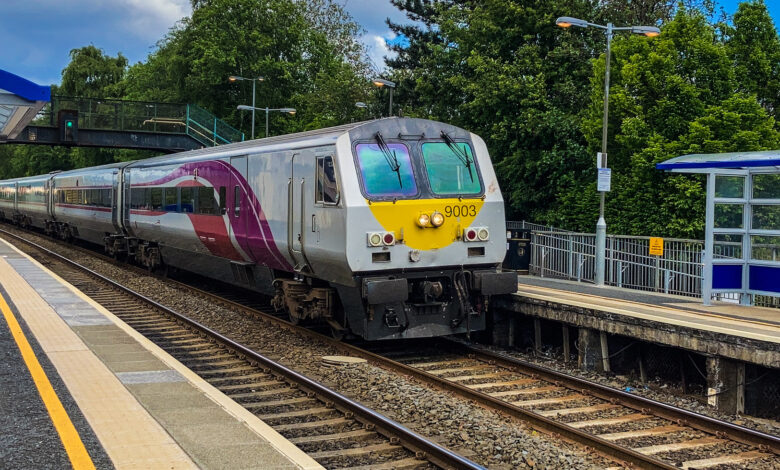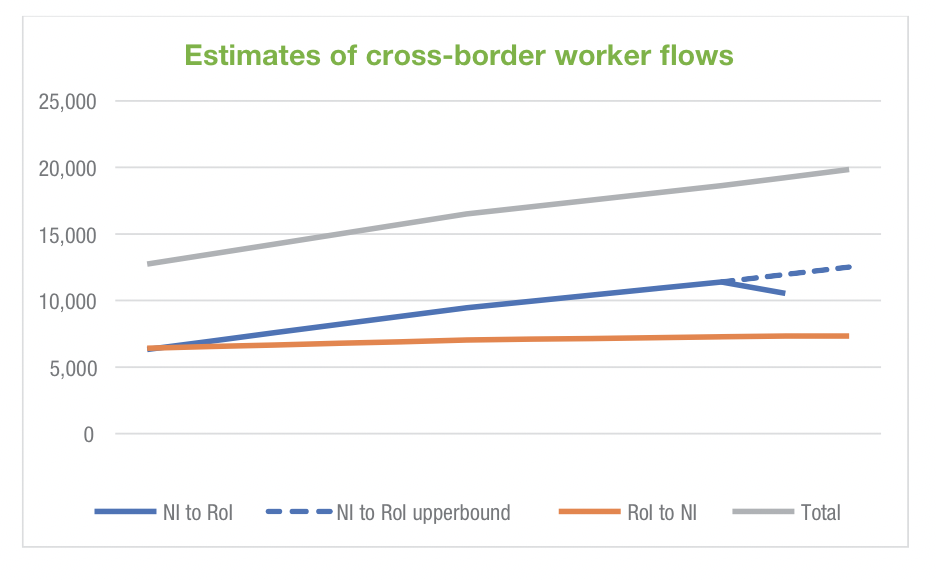Frequency of cross-border work increases

Better salaries and enhanced career prospects are driving an increase in the number of people crossing the border for work.
Undertaking the first comprehensive study of cross-border workers in Ireland, the Economic and Social Research Institute (ESRI) has found that cross-border worker patterns have increased in frequency in both directions from 2011 to 2021, with most increased workers travelling from Northern Ireland to the Republic for improved salaries and career prospects.
Led by Seamus McGuinness, Adele Bergin, and Anne Devlin, the study estimates that the number of cross-border workers has increased from 12,740 to between 17,827 and 19,282 over the period 2011 to 2021; equating to a growth rate of between 40 and 51 per cent. Of this total, estimates include a north-to-south increase of between 67 and 90 per cent and a south-to-north increase of 14 per cent.
Due to the higher incidence of flexible working following the Covid-19 pandemic, and the impacts of Brexit, the ESRI published the study to measure the scale of cross-border worker patterns, and develop an understanding of opportunities and barriers associated with cross-border employment.
The study identifies that cross-border worker flows can mitigate the negative impacts of the business cycle, stating: “Cross-border flows are important for alleviating skill shortages in the Republic and function as a mechanism for lessening the impacts during rises in unemployment in Northern Ireland.”
Wage distribution
The ESRI study calculates substantial wage differences, with north-to-south workers typically earning higher salaries than their south-to-north counterparts who incur a wage disadvantage of approximately 30 per cent relative to their counterparts. Female cross-border workers also earn approximately 30 per cent less than their male counterparts.
Over 30 per cent of north-to-south workers earn a salary of more than €75,000 in contrast to 12 per cent for those travelling south-to-north. Additionally, approximately 40 per cent of north-to-south workers earn below €50,000 compared to 55 per cent for those travelling south-to-north.
The study also estimates that weekly earnings are 13 per cent higher in the Republic, with average weekly earnings €242 higher in the Republic, equating to an annual difference of €12,584 according to nominal data.
Education and tenure
Reflecting on the level of educational attainment, just under 80 per cent of workers hold third-level qualifications, with the rate slightly greater among south-to-north workers.
Exemplifying its high added value nature, cross-border employment is disproportionately concentrated within professional and managerial positions. These positions account for approximately 70 per cent of north-to-south workers and 67 per cent of those travelling from south-to-north. In terms of contractual status, over 90 per cent of respondents are employees, with the remaining proportion self-employed.
Over 90 per cent of respondents are on permanent contracts and approximately 40 per cent are employed in the public sector – a figure that is over representative relative to the labour force in each jurisdiction. The study indicates that 27 per cent of all employees in Northern Ireland are employed in the public sector (NISRA, 2023) compared to 14 per cent in the Republic (IPA, 2022).
However, for those travelling south-to-north, employment is slightly more concentrated in the public sector, which is reflective of the greater public sector employment share in Northern Ireland, relative to the Republic.
52 per cent of respondents have travelled from south-to-north for over 10 years whilst the comparable figure for north-south stands at 41 per cent. The numbers undertaking cross-border work for less than five years is approximately 10 per cent higher among north-to-south workers.

Impacts of Covid and Brexit
The study explores the impact of the pandemic and Brexit on the welfare of cross-border workers. Regarding the pandemic, approximately 12 per cent of workers travelling north-to-south believe that this impacted them negatively, with the corresponding figure for those travelling south-to-north standing at 24 per cent.
The proportion of south-to-north workers who believe that Brexit has impacted them in a substantially negative way stood at 24 per cent compared to under 11 per cent for those travelling north-to-south for employment purposes.
Reasons for cross-border work
Prior to Covid-19, over 75 per cent of all cross-border workers either never or rarely engaged in remote working. Post-pandemic, 47 per cent of north-to-south cross-border workers do their jobs remotely at least once or twice a week, with the corresponding figure for south-to-north cross-border workers standing at 37 per cent; indicating a substantially lower take-up of remote working among those travelling from south-to-north.
Among those cross-border workers travelling for work purposes there is low usage of public transport, with 78 per cent of those travelling north-to-south using cars to do so. For those travelling south-to-north, car usage stood at over 90 per cent.
Approximately two-thirds of cross-border workers live within 20 miles from the border. Availability of a better salary and career prospects are primary factors motivating north-south workers, with two-thirds of workers pointing to higher earnings as a factor and over 40 per cent indicating that they believed that better career opportunities were open to them as a result of working in the Republic.
Barriers
Identified barriers to cross-border working include exchange rate risk, tax return requirements, accessing social welfare benefits, the cost of commuting, and difficulties accessing financial products such as mortgages.
Concluding, the research provides strong evidence that these barriers were much more substantial for those travelling south to north, a situation worsened by the impacts of Brexit and the Covid-19 pandemic. Data suggests 67 per cent of those living in the Republic and working in Northern Ireland reported facing barriers, compared to 47 per cent of those going in the other direction.





